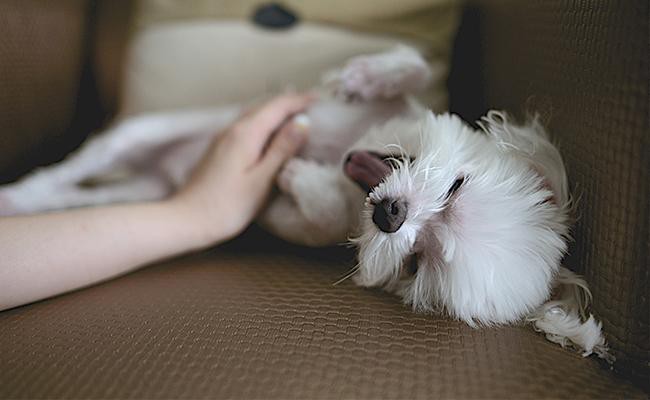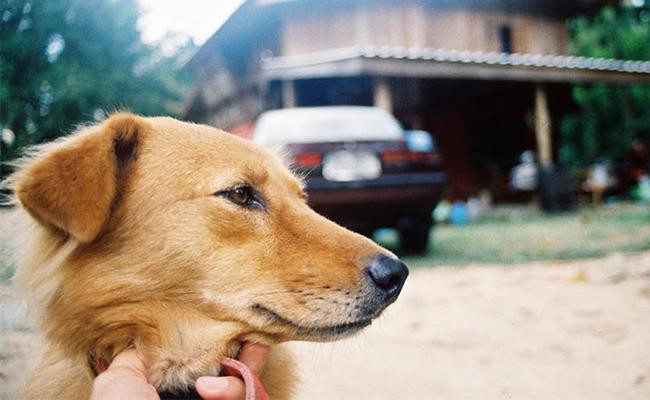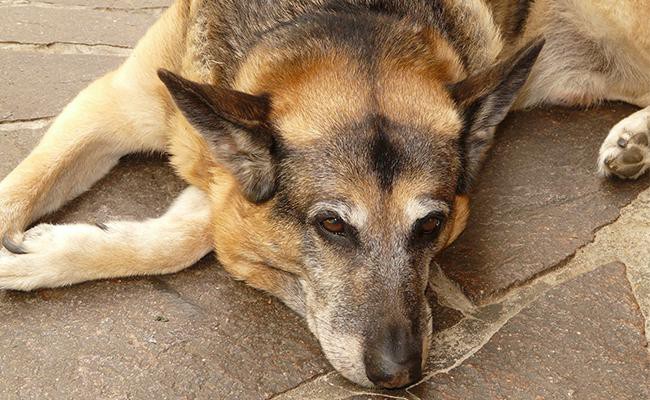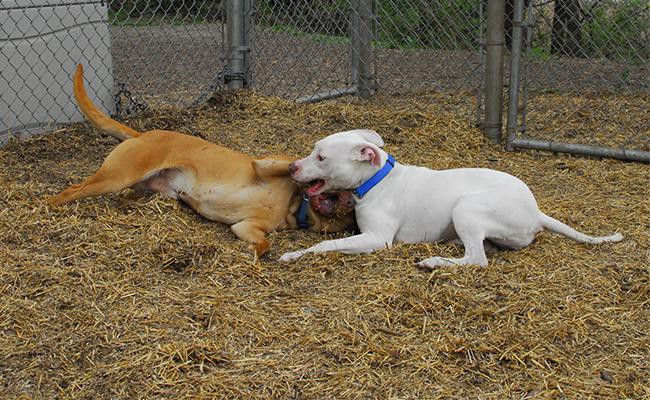- How Does A Puppy React Or Respond To A New Owner?
- How The New Owner Should Handle The Dog?
- Should I Visit My Dog After Re-homing?
- Tips To Follow At Home After The Arrival Of The New Dog
- The Rehomed Dog’s State Of Mind
- Physical Changes Undergone By A Rehomed Dog
- How To Make The Transition As Smooth As Possible?
- Never Betray Your Dog’s Trust
Dog Pregnancy Calculator And Timeline
How traumatic is it actually for a pet dog to change owners? How stressful will a dog feel? The thought itself is troubling.
Even the most prepared and well-known pet owner can often find themselves on the wrong side of the issue when they rehome their beloved pet companion.
This move is equally or more traumatic for our pets. The answer is not that much straightforward and let’s learn more about rehoming a dog and its emotions.
How Does A Puppy React Or Respond To A New Owner?
How a canine responds will actually depend on plenty of factors. This includes criteria such as the age of the dog, their previous living condition, any present health issues, and so on.
In actuality, re-homing is always a stressful and traumatic experience for dogs. It’s not difficult for canines to undergo anxiety and depression if the previous environment was a happy one.
These dogs will actually miss their previous owner and they wish to undergo the sadness. Moreover, dogs coming from abusive or neglectful homes will require more time for adjustment.
Some dogs even show signs of aggression or fear at home.
All canines are animals of habit. That’s the reason why experts advice careful thought and execution. First and foremost, you should ensure that the pet going is the best fit for the new family.
Steps to Make A Dog Feel Secure
It is very thoughtful to plan initial visits between the potential owner and the dog. The minute dog changes hand, there cannot be any visits from the previous owner, as these only breaks the dog’s confidence.
The new dog can adjust much fast if the change happens early, and all dogs happen to feel more frightful at night. There should not be anything insufficient for the new dog, right from their bed to their favorite food.
Ask the previous owner to send the new owner a small part of toys and bedding with familiar scents. These items should be kept at least for a fortnight.
How The New Owner Should Handle The Dog?
- The new owner should spend time with the dog with treats. The dog’s training and play can be exposed and the lead is given to the new master, who then familiarizes with the training and play.
- From there on, the old owner or their family members should not meet the dog at any cost. The new owner should take the dog with himself with treats and joy. Long goodbyes are new in the canine world and only cause trouble.
- The owner should aim for the dog’s total attention with the treats, toys, and training. Most canines settle or stay calm in a moving car, but it will do a lot of good if a family member sits with the dog in the back.
- If the present dog owner delivers the dog himself, just adhere to the same set of instructions. The new owner should handle the dog and keep it busy while the old owner leaves quietly. Let the dog not see the old owner leave at any cost.
- If the dog gets delivered at the airport, plan well in advance so that you can reach home before dusk. Go for a small training session with plenty of play and treats at the first instance itself.
- Play, early training and socialization, and treats are very crucial in helping the new canine feel safe and secure.
Should I Visit My Dog After Re-homing?
Rehoming a dog is a significant decision that can be filled with mixed emotions. After the process is complete, the question often arises: “Should I visit my dog?”
The answer to this question depends on various factors. Let’s explore some considerations when deciding whether or not to visit your rehomed dog.
New Owner’s Perspective
When you rehome your dog, the new owner takes on the responsibility of caring for and bonding with the dog. It’s important to consider their feelings regarding a visit.
Some new owners may welcome a visit, as it can provide reassurance and an opportunity to share updates. However, others may prefer to establish their own routine and bond with the dog without interference.
Respect their wishes and communicate openly to reach a mutual understanding.
Dog’s Adjustment
Rehoming can be a significant change for a dog, and their adjustment period is crucial. A visit from their previous owner may bring mixed emotions for the dog.
While some dogs may find comfort in seeing a familiar face, others might become confused or anxious. It’s essential to prioritize the dog’s well-being and consider how a visit might impact their adjustment process.
Consulting with the new owner and possibly a professional trainer or behaviorist can help determine what’s best for the dog.
Personal Emotions
Visiting a rehomed dog can evoke strong emotions in the previous owner. It may provide closure and reassurance that the dog is happy and well-cared for.
However, it can also trigger feelings of sadness or regret. Consider your emotional state and whether a visit would be beneficial or potentially distressing.
Sometimes, finding peace in knowing that the dog is in a loving home and receiving proper care can be enough.
Tips To Follow At Home After The Arrival Of The New Dog
- When arriving, the dog should first be shown in the backyard. The first task is to make the dog relieve itself in a designated area. Dogs can behave erratically, especially when excited and upset.
- Take the dog on a lead. Let him soak in the surroundings, but let your dog understand the house rules. Keep him always close and be sure he does not feel the pangs of separation.
- Never change the diet at least for a fortnight, and the meals and exercise can remain similar to the ones he had at the former place.
- Make the dog meet other pets in a common area, not more than one at a given time. Social dogs can suffer from dominance problems. Family owned dogs can remain attached to their favorite family members.
- Monitor the relationships and behavior of the new canine for close to three months.
- For the first 90 days, kids aged 9 years or so should be monitored when they play with the dog. This is necessary to make sure that the instructions for the kid and the dog are being followed.
- If a teenager agrees to do the duty of a caretaker, supervise to make sure your pet is being walked, exercised, groomed, watered, and fed properly.
- Place the dog amidst a lovely environment, such as with toys, water, soft bedding. Put a collar and the leash before taking him out. This calm approach will stop or reduce your dog’s separation anxiety.
- If the pet dog turns aggressive at being confined, you should ask the previous owner and confine him in the same exact manner. A foster dog care center should understand that helping the dog stay with other dogs does not reduce his separation anxiety to a great extent.
The Rehomed Dog’s State Of Mind
Experts agree that the “pleasure” section of the pet’s brain will show activity when he catches his owners smell. Domestication of dogs has been part of our culture since ancient times.
Shattering an existing relationship can push your dog into depression. The signs of depression in dogs include a lack of motivation to play or eat. A depressed dog may sleep more and mostly at different times.

Some dogs undergo anxiety problems. The symptoms include barking and whining due to frustration or fear; they may start looking for their old owner.
Abused dogs tend to have issues dealing with new surroundings and can exhibit signs of mistrust, shyness, or suffer from urinary problems. Aggression is also not ruled out in these rehomed dogs.
Physical Changes Undergone By A Rehomed Dog
Emotional changes, as well as physical changes, are normally witnessed in a rehomed dog. Some dogs are known to suffer from gastrointestinal problems. This can manifest in the form of weight loss, diarrhea, and vomiting.
Some dogs show signs of stress by producing a vast quantity of drool or shiver uncontrollably. These signs can last, depending on the condition of the dog, for hours or days. A vet could help treat the condition easily.
How To Make The Transition As Smooth As Possible?
- Create a safe place so that he can relax when he feels stressed out
- Design a suitable routine and stick to it. Feed him at a specific time with the same food
- Provide plenty of opportunities for exercise, socialization, and play
Never Betray Your Dog’s Trust
Dogs are loving, caring animals that will show signs of physical and emotional separation.
If you believe that rehoming is the only option you have, then find the right person who can provide stability, love, care, and trust he deserves.
Paying a fee for rehoming is a good option and this will ensure that the new person is really serious about parenting a new dog.
























